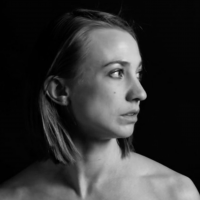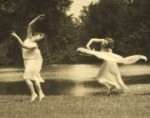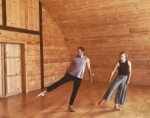
Digital Dances/Imagined Scores
by Eleanor Goudie-Averill
For the Digital Fringe, Sean Thomas Boyt (STB) has created How To Dance, 54 “minimal dance scores,” accessible through the Fringe website. The project page opens with several critiques of the work, before we see it ourselves. Reviews range from “a brilliant voice out of the millennial think piece era“ to “barely legible.” STB calls the work “post-post-post modern” (maybe a catch-all for everything being made currently).
The scores appear as clickable links (which open as single-page PDFs) below a short description of how one might use them. If you’re unfamiliar, a dance score is a set of choreographic instructions, or generalized set of directions for creating movement.* Does STB’s audience know what a dance score is? Does that matter? Does it matter if you enact the scores, or just read them through?
The scores range in complexity and depth. In the first, A Collaboration, we are encouraged simply to meet up with a friend. Others are tongue in cheek: the score for Follow Someone reads “Anyone.” Some are inside jokes about dance: Al Dente reads, “Noodle until desired doneness” (“noodling” is a term for totally unstructured improvisation). Floorwork describes a basic Bartenieff Fundamental pattern often done in dance classes, and Closet Monster requires a full Vaganova barre. In the final score, STB says, “Remember, nothing is literal in dance—Could that car be trained by Trisha Brown?” Other scores are vague: A Gesture Structure provides a pattern of the letters and no further instruction. Crushin’ It is a list of colors to “interpret at will.” Only a few actually tell you which movements to do and in what order. This one is best done in order and in unison is a word search. The scores could keep anyone busy for a long time.
In tD’s Digital Fringe preview, STB described the scores as “unperformed dances.” I like this, especially because, he says, any dance produced using the scores are as yet unseen and enacted privately, or have been envisioned or danced in the imagination.
How To Dance, Sean Thomas Boyt, Digital Fringe, September 6-23
*Footnote for the curious: Scores in dance are certainly a post-modern thing, and Trisha Brown, widely known for using scores in her work (see the score for Accumulation), credits the brilliant Simone Forti as originator of score-based choreography. Forti’s Handbook in Motion (1974) details many of her scores. In A Choreographer’s Handbook, Jonathan Burrows identifies two kinds of dance scores: “First… what is written is a representation of the piece itself,” and second, the score is “a tool for information, image and inspiration, … a source for what you will see” (Burrows, 2004). Yoko Ono made scores for performance and film; see her book Grapefruit (1964). Another rich resource for using scores in dancemaking is the Forsythe Company’s Motion Bank.
By Eleanor Goudie-Averill
September 16, 2018










